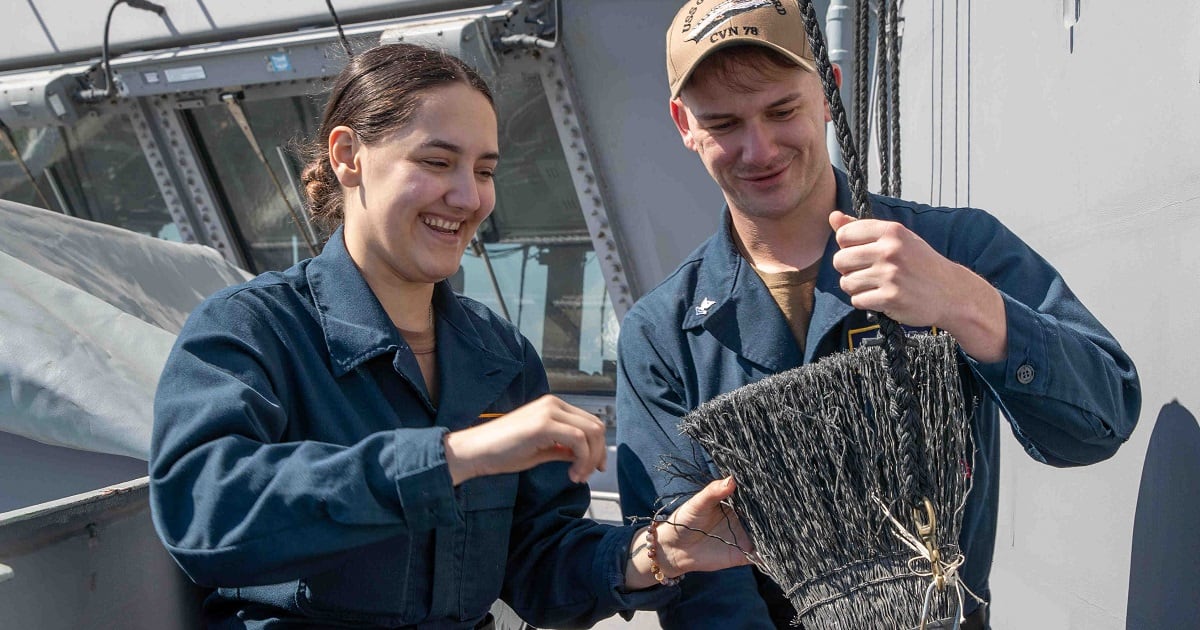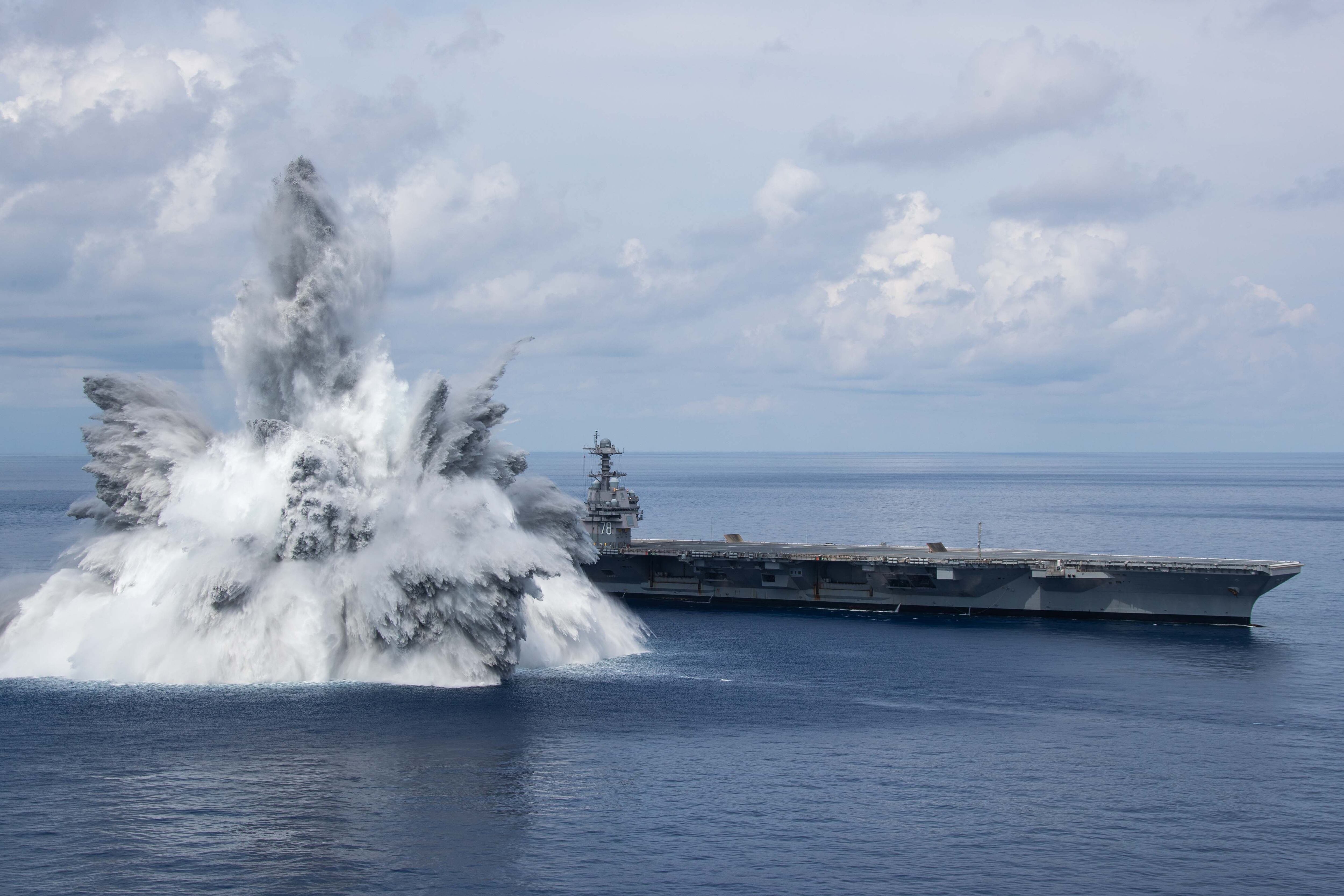The aircraft carrier Gerald R. Ford concluded a maintenance availability and sea trials Monday in preparation for the its first deployment.
After completing modernization and maintenance work, then sea trials, during a sixth-month Planned Incremental Availability at Huntington Ingalls Industries-Newport News Shipbuilding in Newport News, Virginia, the carrier arrived at Naval Station Norfolk to kick off training and certification.
That will include system qualification tests, flight deck certification, air warfare training, a Combat Systems Operational Readiness Evaluation and embarking Carrier Air Wing 8, the Navy said.
The Ford’s maintenance availability started in September 2021 after the carrier wrapped up three shock trials over the summer.
The final shock was conducted off the coast of St. Augustine Beach, Florida, and registered as a 3.9 on the Richter Magnitude Scale, the equivalent of a minor earthquake. The 40,000-pound charge that exploded “right off the starboard beam” of the ship did not lead to any serious casualties and resulted in less damage than anticipated, sister publication Defense News previously reported.
The last time the Navy had conducted underwater shock testing on a carrier was in 1987 with the aircraft carrier Theodore Roosevelt.
“Ford required only 20 percent of the repair work we saw with TR,” Rear Adm. James Downey, program executive officer for aircraft carriers, said in a Tuesday Navy news release.
Eighty-five percent of the repairs stemming from the shock trials were completed by the ship’s force, rather than the shipyard’s force, he said.

Additionally, the Navy said that the setup of the Ford’s command and control spaces simplified modernizing the carrier. It’s now possible to install new technologies without cutting into decks and the like on the Ford, according to Downey.
“Historically, about 40% of modernization work on Nimitz-class carriers goes into rip out, which involves cutting and welding,” Downey said. “The Navy specifically designed Ford with a flexible infrastructure, so you can build in new capabilities to enhance system integration that facilitate immediate operational gains for the warfighter.”
RELATED

Downey told reporters in January the Ford would deploy “by the fall.”
But the carrier is slated to embark on an unconventional deployment, according to the head of Naval Air Force Atlantic. Rear Adm. John Meier told Defense News in February that the carrier would deploy for a “service-retained early employment” period, instead of falling under the operational command of a regional combatant commander, as is typical.
“I think it’s a great opportunity for us to demonstrate the new technology,” Meier said at the American Society of Naval Engineers’ Technology, Systems and Ships Symposium. “We will be working with partners, we will be working all over the place as 2nd Fleet takes charge of that carrier and operates with a wide variety of operations, up and down the coast, across the Atlantic, down to the Caribbean.”
The carrier, which was originally scheduled to deploy in 2018, concluded its first crew certification in November 2021.




